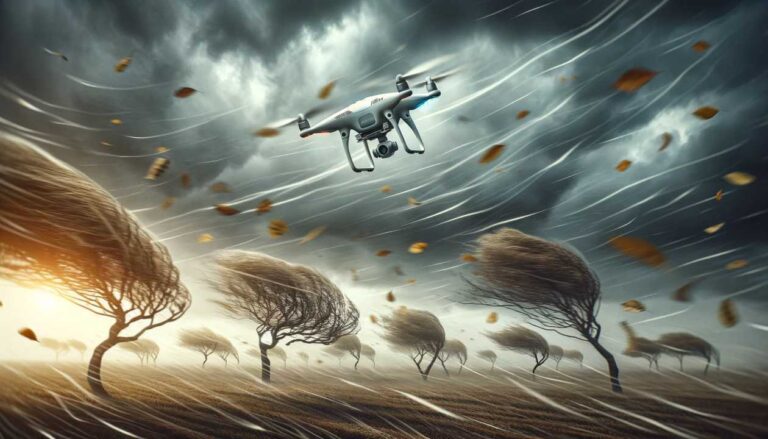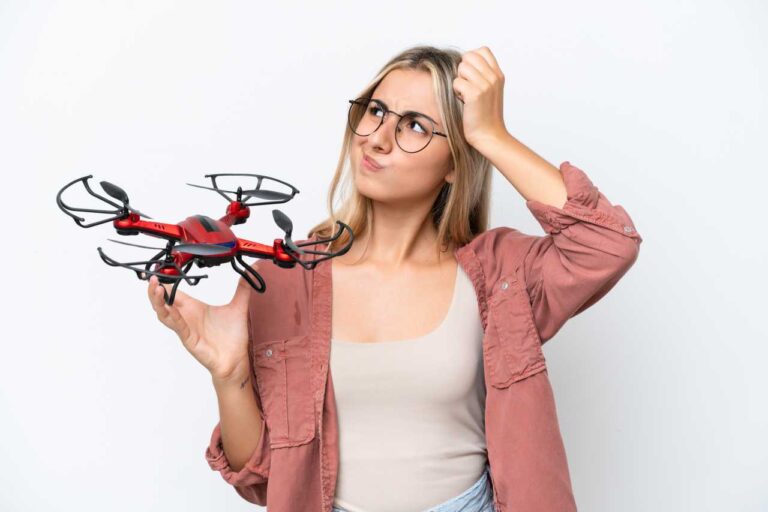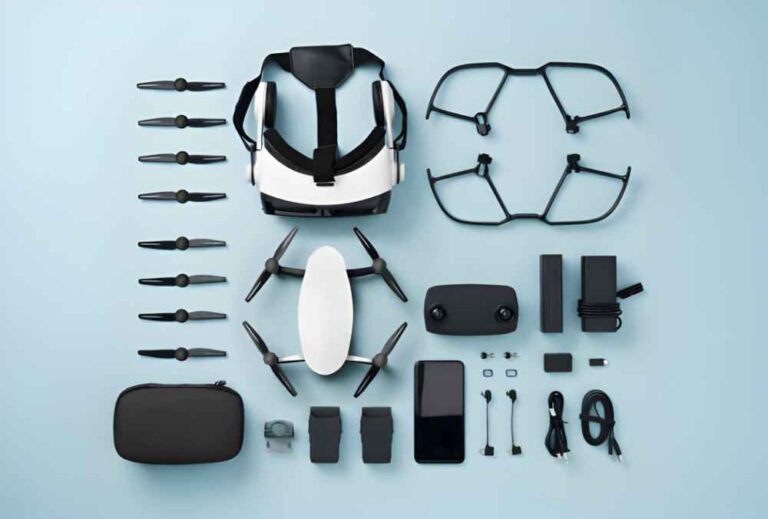Drones have revolutionized the way we capture aerial footage, survey landscapes, and even deliver packages. But for beginners, piloting a drone can be a tad overwhelming. Enter the headless mode—a feature that promises to simplify the flying experience. But what exactly is this mode, and how does it benefit drone enthusiasts? Let’s dive in.
What is Headless Mode on a Drone?

Headless mode, often referred to as “compass mode” or “orientation-free” mode, is a flight setting that allows the drone to move in a direction relative to the pilot’s position, regardless of its orientation. In simpler terms, if you command the drone to move left, it will move left from your perspective, irrespective of where its front is facing.
Why is Headless Mode Considered Beginner-Friendly?
Remember the first time you tried to control a remote-operated toy car? The challenge was not just in speeding up or slowing down, but in ensuring the car moved in the desired direction. Drones, with their three-dimensional movement, present a similar challenge but on a more complex scale.
Headless mode simplifies this. By eliminating the need to constantly be aware of the drone’s front and rear, beginners can focus on how to calibrate a drone without the added stress of orientation. Understanding how drones work helps in this aspect, as it’s akin to having training wheels when learning to ride a bike—it provides that extra layer of security and confidence.
How Does Headless Mode Work?
At the heart of headless mode are the drone’s internal magnetic sensors. These sensors, in tandem with the compass mode, determine the drone’s orientation. When you activate headless mode, the drone sets a reference point, usually the direction the drone is facing when powered on or when the mode is activated.
From this point onwards, all flight controls—be it yaw (rotation), pitch (forward or backward tilt), or roll (side tilt)—are relative to this reference point. So, even if the drone is facing away from you, pressing the “forward” command on the controller will make the drone come towards you.
What are the Advantages of Using Headless Mode?
In the dynamic world of aerial robotics, drones have emerged as versatile tools, offering functionalities ranging from photography to package delivery. One feature that stands out, especially for those new to the realm of drone piloting, is the headless mode. But what makes this mode so sought after? Let’s delve deeper into its advantages.
1. Simplified Flight Training:
For many, the initial foray into drone piloting can be a tad overwhelming. The challenge isn’t just about mastering the controls but also understanding the drone’s orientation. Here’s where headless mode shines. By ensuring that the drone’s movement is always relative to the controller’s perspective, it eliminates the need for pilots to constantly determine the drone’s front and rear. This orientation-free approach makes the learning curve less steep, allowing beginners to focus on basic drone operations without the added stress of directional awareness.
2. Enhanced Spatial Control:
Imagine trying to capture a scenic mountain range with your drone. With standard controls, any slight misjudgment in the drone’s orientation can lead to missed shots. Headless mode offers enhanced spatial control, ensuring that your drone moves precisely in the direction you intend. Whether you’re navigating through dense forests or capturing aerial selfies, headless mode ensures every movement is intuitive and accurate.
3. Crash Prevention and Safe Flying:
Drones, while robust, are not immune to accidents. Collisions, especially for beginners, are not uncommon. However, when considering how fast can a drone fly, it becomes clear why headless mode acts as a safety net. With its simplified controls, the chances of misdirection and potential crashes reduce significantly, which is vital at higher speeds.
This is especially crucial when navigating tight spaces or when the drone is momentarily out of sight. Additionally, understanding how far can drones fly is important in these scenarios. By ensuring that the drone responds predictably to every command, headless mode promotes safe flying, even when the drone is at the edge of its range.
4. Versatility in Various Scenarios:
From recreational flying to professional drone racing, headless mode proves its worth in a plethora of scenarios. For instance, in drone racing, where speed and precision are paramount, the split-second saved by not having to adjust for orientation can be the difference between victory and defeat. Similarly, for videographers, headless mode ensures that they can focus on getting the perfect shot without being bogged down by intricate flight dynamics.
5. User-Friendly Experience:
At its core, headless mode is about providing a user-friendly experience. It’s akin to driving an automatic car as opposed to a manual one. While purists might prefer the intricacies of standard controls, many appreciate the convenience and ease that headless mode brings to the table, making drone piloting accessible to a broader audience.
When Should You Use Headless Mode?
While headless mode is a boon for beginners, even seasoned pilots find it useful in specific scenarios:
- Challenging Orientations: In situations where the drone’s front is hard to determine, like when using FPV drones with cameras installed, headless mode can be a lifesaver.
- Aerial Photography: For capturing that perfect shot without constantly adjusting the drone’s orientation, headless mode is invaluable.
- Tight Spaces: In areas with limited maneuverability, having the drone respond directly to your commands without worrying about its orientation can be a game-changer.
How to Activate Headless Mode on Different Drones?
Drones, with their myriad of features and settings, can sometimes be a bit overwhelming for users, especially when trying to activate specific modes. One such mode, the headless mode, is a favorite among both beginners and seasoned pilots. But how do you activate it? Let’s get into the specifics.
Understanding the Headless Mode Icon
Before diving into the activation process, it’s essential to familiarize yourself with the headless mode icon on your controller. Typically, this icon resembles a drone or a compass. When this icon is solid blue, it indicates that headless mode is active. If it’s blinking or turned off, headless mode is deactivated.
Activating Headless Mode: The Basics
- Power Up: Start by turning on your drone. Ensure it’s on a flat surface and in a safe location, away from obstacles.
- Locate the Icon: On your controller, find the headless mode icon. This might vary slightly depending on the drone model, but it’s usually prominently displayed.
- Activation: Press the headless mode icon on your controller. Depending on your drone’s make and model, you might need to press it a couple of times. Wait for the icon to turn solid blue. This color change signifies that headless mode is now active.
- Fly with Confidence: With headless mode activated, your drone will now move in the direction corresponding to your controller’s orientation, making piloting more intuitive.
Troubleshooting Headless Mode Issues
- Blinking Icon: If the headless mode icon starts blinking, it indicates that the mode is currently off. To reactivate, ensure that the mode is properly engaged by pressing the icon until it turns solid blue again.
- Non-Responsive Mode: If you find that the headless mode isn’t working as expected, double-check to ensure that the mode is activated. Sometimes, other settings or modes can interfere with headless mode, so ensure no conflicting settings are turned on.
- Always Refer to the Manual: While the above steps are generally applicable to most drones, always consult your drone’s manual for model-specific instructions. Different brands or drone models might have unique activation methods or additional features related to headless mode.
Safety First
Remember, while headless mode simplifies the flying experience, always prioritize safety. Ensure you’re in a clear space, away from people, animals, or potential obstacles. This mode is a tool to enhance your flight experience, but the responsibility of safe flying always rests with the pilot.
By understanding and mastering the activation process, you can make the most of headless mode, ensuring a smoother, more enjoyable flight experience every time you take to the skies.
Potential Drawbacks and Concerns
No feature is without its set of challenges, and headless mode is no exception:
- Electromagnetic Interference: Drones rely on magnetic sensors for orientation. In areas with high electromagnetic interference, headless mode might not function optimally.
- Over-reliance: While headless mode is great for learning, relying solely on it can hinder a pilot’s ability to master standard controls, which are essential for professional flying.
- Transitioning Issues: Switching between headless and default flying modes mid-flight can be disorienting, leading to potential mishaps.
Advanced Tips for Flying in Headless Mode
Drones have become an integral part of the modern technological landscape, offering a blend of entertainment, professional photography, and even competitive racing. As drone enthusiasts explore the myriad of features these aerial devices offer, headless mode stands out as a particularly intriguing function. But to truly harness its potential, one must be equipped with advanced tips and tricks. Let’s explore some of these.
Importance of Initial Orientation:
The magic of headless mode lies in its reference-based movement. When you activate this mode, the drone’s initial orientation at take-off becomes its primary reference point. This means that all subsequent movements are relative to this initial direction. For instance, if your drone’s front was facing north during take-off and you command it to move forward in headless mode, it will head north, irrespective of its current orientation. Therefore, always be mindful of your drone’s starting position. This awareness ensures that you can predict its movements accurately, enhancing your control and flight experience.
Striking a Balance: Avoid Over-reliance:
Headless mode, with its user-friendly approach, can be tempting to use exclusively. However, it’s crucial to strike a balance. While headless mode simplifies certain aspects of flying, relying solely on it can hinder your ability to master the drone’s standard controls. Traditional flight modes offer a depth of control essential for intricate maneuvers, professional photography, and drone racing. Thus, use headless mode as a tool, not a crutch. Regularly practice flying in standard mode to develop a holistic skill set.
Prioritize Safety Above All:
Drones, while fun, are also powerful machines capable of reaching significant speeds and altitudes. Safety should always be paramount. When using headless mode, ensure you’re in a clear, open space, free from potential obstacles like trees, buildings, or power lines. This precaution is especially vital for beginners, as the simplified controls of headless mode can sometimes lead to overconfidence. Remember, a safe flight is a successful flight. Regularly inspect your drone for any wear and tear, ensure its firmware is updated, and always be aware of your surroundings.
Embrace Flight Training:
Consider investing time in flight training sessions. These sessions, often offered by drone manufacturers or local enthusiast groups, provide hands-on experience and insights into advanced features like headless mode. With expert guidance, you can master the nuances of headless flight, ensuring you’re making the most of this innovative feature.
Debunking Myths: Is Using Headless Mode Cheating?
In the dynamic realm of aerial robotics and quadcopters, a frequent topic of debate arises: Does utilizing headless mode on drones constitute ‘cheating’? A section of drone enthusiasts, particularly the purists, argue that the pinnacle of drone piloting involves mastering the conventional flight controls that are closely tied to the drone’s orientation. However, this perspective warrants a closer examination.
Headless mode, a standout feature in contemporary drones such as Holy Stone HS110D, DEERC D20, and SYMA Drone with 1080P Camera, transcends being merely an additional feature. It epitomizes the progression of drone technology, aimed at enhancing the overall flight experience. This mode is particularly beneficial for novice pilots, serving as a navigational aid in the intricate world of drone flight.
Headless mode can be visualized as a guiding mechanism, similar to training wheels for new cyclists. It creates a beginner-friendly environment, allowing newcomers to engage in basic drone operations without the complexities associated with understanding drone orientation, including yaw, pitch, and roll. As pilots evolve from recreational to professional flying, they have the option to deactivate headless mode, taking on more sophisticated maneuvers.
For drone models like the NEHEME NH760 and Potensic A20 Mini, which may not include advanced interfaces such as mobile app settings or First-Person View, headless mode proves to be transformative. In scenarios where visual cues for orientation are minimal, maintaining a reference point for direction can be challenging. In these instances, headless mode, with its orientation-agnostic approach, simplifies the controls, facilitating a smoother and more controlled flight experience.
The Impact of Headless Mode in Drone Flight
Headless mode on drones is more than just a beginner-friendly feature—it’s a testament to how far drone technology has come in making aerial piloting accessible to all. Whether you’re a novice looking to dip your toes in the world of drones or a seasoned pilot seeking more control, headless mode promises a smoother, more enjoyable flight experience. So, the next time you’re up in the air, give headless mode a spin and witness drone piloting like never before.










